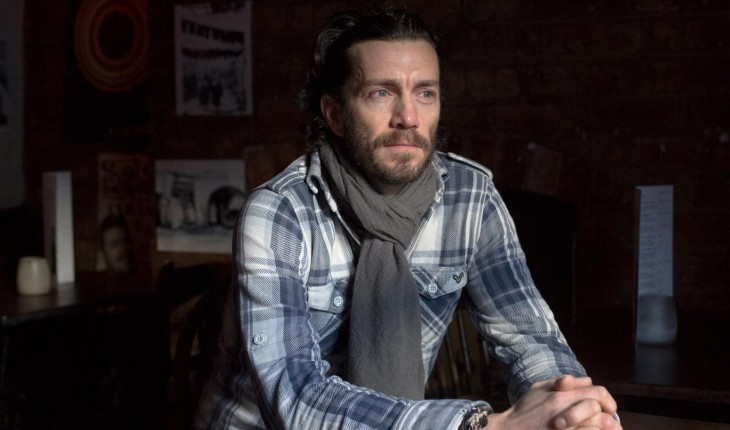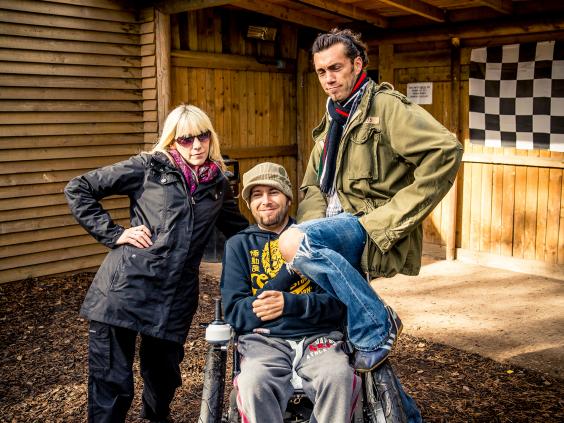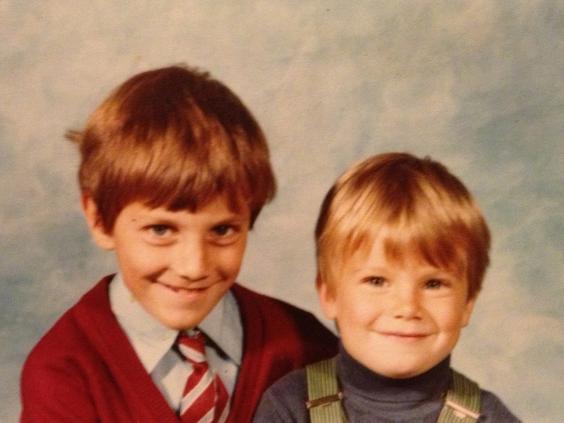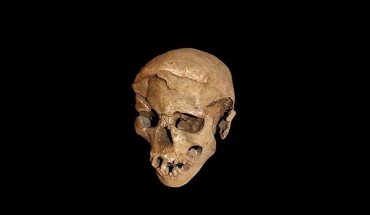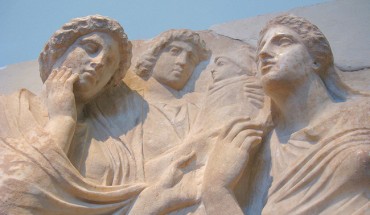In every family, there is the cautious child, and then there is the one who is always climbing trees and practising bike tricks. In the Tolkien family (of Lord of the Rings fame), the adventurous one was Mike. Mike died nearly a year ago, of motor neurone disease (MND), aged 39, but his legacy lives on through a series of challenges left for his older brother.
Growing up in the idyllic Welsh countryside, along with their sister, Mandy, Mike and his elder brother Royd were as close as any two siblings could be. Their brotherly rivalry often manifested itself with Mike climbing to the highest branches or jumping that little bit higher on his bike in order to outdo Royd.
As Mike became older (and increasingly bolder), this yearning for his next rush saw him taking part in extreme sports. In short, he became an adrenaline junkie. But while Mike was happiest jumping out of an aeroplane or snowboarding down a mountain, Royd was far more content with cups of tea and gardening.
Despite their radically different personalities, the two brothers, great grandsons of the writer JRR Tolkien, remained close. Royd even allowed Mike to cajole him into paintballing a couple of times. Unfortunately, the experience scared him and Mike called him a “pussy”. Nonetheless, they still shared common interests and would often go camping in the Norwegian wilderness, together with friends, where they would forage for food and try to live off the land.
The first sign that there was something wrong with Mike was when he began experiencing cramps in his calf muscles. As the muscle cramps continued, other symptoms began to appear, such as muscle twitch and foot drop, where he lost strength in his feet and needed special equipment to avoid falling over. Further tests were conducted, including blood tests and a lumbar puncture, but were inconclusive. Eventually, the cause of these symptoms emerged.
In September 2012, Mike Tolkien was diagnosed with MND, a terminal condition with no known cure. It destroys the neurons that send signals to the different parts of the body, while keeping the mind perfectly intact; essentially making patients prisoners trapped in their own bodies. It is an horrific condition for anyone to suffer, but perhaps doubly so for someone as physically active as Mike.
When Mike was diagnosed with motor neurone disease,” says Royd Tolkien, “I literally had to Google it.” There is no single test for detecting MND and it is only diagnosed through a process of elimination as symptoms emerge. “There is no treatment, no medication and nothing you can do,” says Royd bitterly. “My brother was just told to get his affairs in order.”
It was a very dark place that Mike, Royd and the rest of the Tolkien family found themselves in. Later that day, they gathered at Royd’s home, where they sat around the table, yet never actually talked about it. It was as if, by acknowledging what had happened, it would somehow make it more real. As the evening wore on, it was finally just Royd and Mike.
“It was kind of like a big elephant in the room,” recalls Royd. “We just looked at each other and completely broke down and hugged ea ch other.” That was the only moment when Royd allowed himself to acknowledge the grief he felt for his brother. From that point on, he, Mike’s girlfriend, Laura, and the rest of the Tolkien family strove always to remain positive and surround Mike with love. “It was filled with fun and laughter and joy and happiness,” smiles Royd. “That is really the only medicine he could have.”
As Mike’s condition worsened and he lost muscle control, Royd and Laura found themselves becoming Mike’s carers. Royd would care for Mike during the day and Laura would look after him at night. “As exhausting as it was for me, it was relentless for Mike,” says Royd. “Any vague thought I would have of being a little bit exhausted would be pushed to one side as it didn’t matter.”
Some time in 2013, Mike and Royd talked about going to Queenstown in New Zealand together. Queenstown is the adventure tourism capital of the world and the place to go for any adrenaline junkie. Mike had always wanted to go but had never made the trip.
However, Mike was forced to accept that he was no longer physically able to partake in the activities, so it was suggested that Royd would undertake them in his place. “Originally, [it was] just going to be me and Mike traveling,” says Royd. “Anything that Mike could not do, such as a bungee jump – which I cannot stand – I would do on his behalf, like he would push me off the cliff or whatever it may be.”
But, as his condition worsened, it soon became obvious that Mike was unable to complete the trip. It was around this time the idea was floated that if Mike could not make the trip, then perhaps Royd should do it on Mike’s behalf.
Mike made a bucket list of 50 challenges, which Laura typed up, as he was no longer able to use his hands. However, unlike other challenges, where the challenger is aware of what is expected of them, Royd still has no clue as to most of the content on the list.
By the end of 2014, Mike was visibly deteriorating, but there was never any discussion of preparing for his final days. The last thing a young man wants to hear is that he is getting worse. “I kept a lot of emotions bottled up during Mike’s illness, because if I didn’t, I would be a blubbering mess,” admits Royd. “I needed to remain strong and sharp for Mike and to keep the positivity going.” Finally, on 28 January 2015, Mike Tolkien passed away.
The first inkling of the nature of Mike’s bucket list came a couple of days before Mike’s funeral, when Laura gave Royd a note, revealing the first of Mike’s challenges. In the note, Mike asked Royd to trip over during the most awkward moment of the funeral, without anyone realising what he was about to do.
Royd did as Mike requested and deliberately tripped over as he stood to give his eulogy. “The reaction was shock and nobody could look me in the eye. I could see people hesitating about whether they should run up to help,” recalls Royd. “I then got my speech out and held up another note that read ‘trip over’, and explained that they could blame Mike for that. It was not just to make me squirm, but also to cut the tensions and not make it such a sombre situation. He didn’t want people mourning. It was a celebration of what a great person he was.”
Royd has no clue what the other 49 items on Mike’s bucket list include. The moment he learns of the nature of each challenge will be when he arrives at the location in New Zealand where each is to take place. The only hint that has come from his family, who appreciate the nature of Mike’s humour, are their comments of “rather you than me”. “I know [Mike] is not just going to just make me do a bungee jump,” Royd says, with a laugh. “He’s going to proper stitch me up to make it awkward and embarrassing. I wouldn’t put it past him to have me dress as a Hobbit on the journey to New Zealand.”
Despite Royd’s reticence, there was never any consideration that he would refuse to heed the call. Instead, inspired by his brother’s enduring bravery and selflessness, Royd, now a film producer, has decided to not only fulfil every challenge of his brother’s bucket list, but to film it as well, in order to produce a documentary highlighting the horrific nature of motor neurone disease.
Royd’s documentary, called There’s A Hole in my Bucket, will follow his journey across New Zealand, completing the 49 remaining challenges as a way of honouring his brother’s memory and all victims of MND.
“We came across people who gave up their time to do anything they could to help, from having a nice chat or physiotherapy, to helping with treatment and support with carers. An awful lot of people,” he concludes, “just do not get the credit they deserve.”
